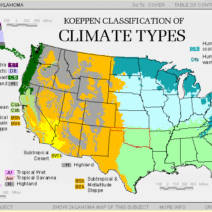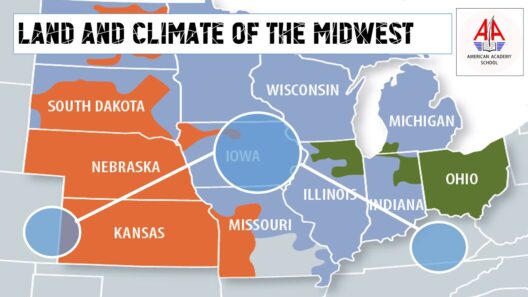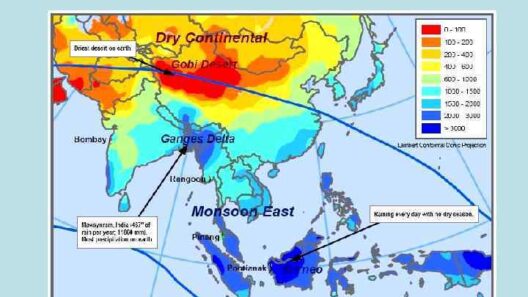Arizona, a state synonymous with sun-drenched deserts and expansive vistas, boasts a climate that intrigues both residents and visitors alike. The intricate interplay of geographical features manifests a diverse climatic tapestry that fluctuates between arid extremes and temperate interludes. This discourse delves into the multifaceted aspects of Arizona’s climate, capturing the essence of its desert days juxtaposed with cool nights, and extending an invitation to rethink preconceptions about this often oversimplified environment.
To understand Arizona’s climate, one must first consider its topography. The state is a veritable patchwork of geological formations, ranging from the saguaro-dotted Sonoran Desert to the cool elevations of the Colorado Plateau. This diversity yields distinct climatic zones, each characterized by unique temperature variances, precipitation patterns, and ecological systems.
The Sonoran Desert, known for its relentless sun and aridity, exemplifies the typical Arizona climate. Here, temperatures can soar dramatically, with summer averages reaching well into the high 100s Fahrenheit. This arid expanse, however, experiences a seasonal transformation during the monsoon months of July to September. The humid air brings thunderstorms that rejuvenate the landscape, bestowing life upon the often-parched earth. It is during these fleeting moments of precipitation that one can witness the remarkable resilience of desert flora and fauna.
Transitioning to the higher elevations found in northern Arizona reveals a striking climatic contrast. The Kaibab Plateau, home to the majestic Grand Canyon, exhibits a cooler and more temperate climate. Here, the elevation plays a crucial role in transforming what could otherwise be a monotonous desert climate into a more diverse habitat. Summer days are warm, but evenings often cool down significantly, with temperatures sometimes plummeting into the 50s Fahrenheit. This phenomenon of warm days and cool nights signifies a shift in perspective; it underlines the importance of local climate nuances that often go unnoticed.
The interplay between temperature and elevation creates a fascinating climatic dichotomy within the state. While the southern regions bask under the intense glare of the sun, the northern territories offer a refuge from the sweltering heat, allowing for a veritable expansion of biodiversity. This climatic variation not only influences the types of vegetation that thrive in each region but also affects the human activities that can flourish there. Agriculture, tourism, and recreational opportunities are all shaped by an understanding of microclimates within the sprawling landscape.
Moreover, Arizona’s climate is marked by its pronounced seasonal variations. Despite the desert’s reputation for relentless heat, one must not overlook the winter months. In the southern realm, winter is mild, and the days remain sunny, perfect for exploring the stunning scenery. However, in the northern highlands, winter can bring snow, transforming the landscape into a winter wonderland. The snow-capped peaks contrast dramatically with the desert below, revealing a striking visual juxtaposition that captures the imagination.
As one navigates through the seasons, the climate also influences not only the natural environment but also the cultural fabric of the state. Native American communities have long been attuned to the rhythms of the land, understanding the cyclical nature of drought and moisture. Their agricultural practices reflect a deep-rooted connection to the climatic patterns, emphasizing sustainability and respect for the delicate balance of ecosystems. Such interactions present an opportunity to learn from historical practices, especially in the context of contemporary challenges posed by climate change.
Climate change, an inexorable reality affecting global weather patterns, is also manifesting itself in Arizona. Higher average temperatures and unpredictable precipitation cycles threaten not just the flora and fauna, but also the water resources that many communities rely upon. The once-predictable monsoon season is becoming increasingly erratic, challenging agricultural viability and endangering the delicate equilibrium of the desert ecosystem.
This inevitability fosters a sense of urgency; it not only compels individuals to contemplate their own interactions with the environment but also kindles a collective responsibility. Strategies centered around water conservation, xeriscaping, and sustainable land-use practices become imperative. A reverence for the land, inspired by current environmental science, underlines the critical need to transition toward more sustainable living practices, even from within the harsh confines of the desert.
Indeed, Arizona’s climate paints a picture that is as vibrant as it is complex. The stark contrasts between blazing desert days and the gentle caress of cool nights beckon an exploration of resilience, adaptation, and sustainability. This dynamic state transcends the superficial representations of aridity; it offers a profound narrative about survival and cohabitation with nature. The climate of Arizona serves as a compelling reminder of the intricate relationship between human and environmental trajectories. Every sunset over the desert horizon presents a promise—a promise that through understanding and introspection, we can cultivate a symbiotic relationship with our surroundings.
Ultimately, embracing the subtleties of Arizona’s climate revitalizes our perspective on environmental consciousness. By recognizing the interplay of geological features, seasonal changes, and the implications of climate change, one can foster a more profound appreciation for this remarkable state. As curiosity expands and knowledge deepens, the narrative of Arizona transforms from mere desert stereotyping into one of rich ecological diversity and a resilient future.








